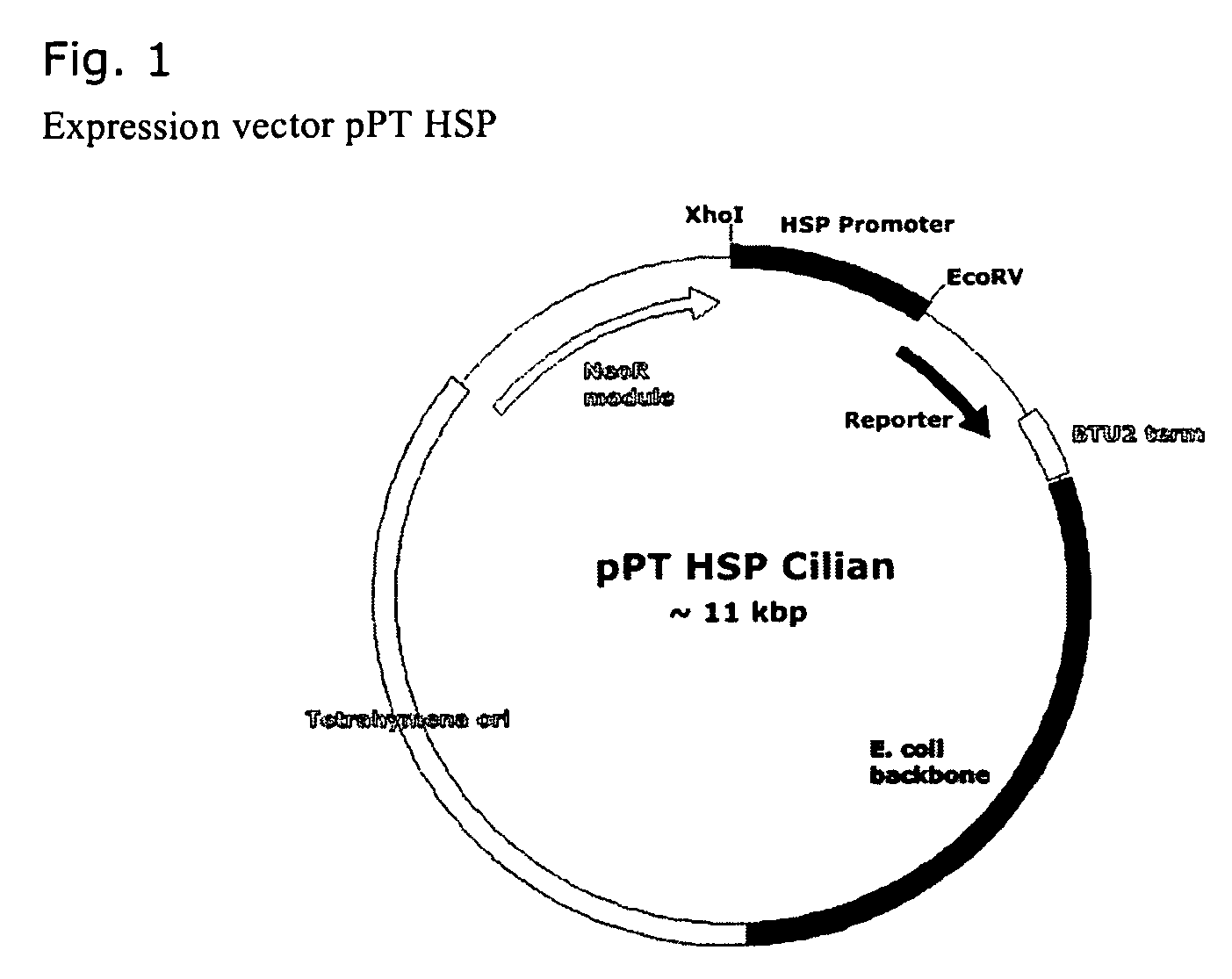Tetrahymena heat inducible promoters and their use
a technology of promoters and tetrahymena heat, which is applied in the field of recombinant molecular biology, can solve the problems of time-consuming and resource-consuming disposal of contaminated media, and the inducible system of choice of metallothionein promoters
- Summary
- Abstract
- Description
- Claims
- Application Information
AI Technical Summary
Benefits of technology
Problems solved by technology
Method used
Image
Examples
example
[0020]The following example is provided to illustrate the embodiments of the present invention but is not intended to limit its scope.
Culturing and Transformation of Tetrahymena
[0021]All strains used were derived from Tetrahymena thermophila and have been described in detail previously. The transformation of T. thermophila cells was performed with modifications as published earlier.10,11 Cultivation was carried out at 30° C. Target gene expression was induced by heat shock at 41° C. (HSPs) or by addition of 20 nM Cd2+ (MTT1).
Cloning of HSP Promoter Regions, Coding Sequences and Vector Construction
[0022]SEQ ID NO: 1 was amplified from genomic T. thermophila DNA by two primers HSP90_F ATATCZCGAGAGCATGCTTTTTCATGTACTATTCC (SEQ ID NO: 2) and HSP90_R ATCCATTTGTTATGATATATCTTTTTTTTTAATTAATTGC (SEQ ID NO: 3), underlined bases bearing primer extensions. Obtained per fragment was subjected to gel electrophoresis, purified, cut by XhoI and ligated into the vector pPT Cilian, yielding a functio...
PUM
| Property | Measurement | Unit |
|---|---|---|
| concentrations | aaaaa | aaaaa |
| stress response | aaaaa | aaaaa |
| heat stress | aaaaa | aaaaa |
Abstract
Description
Claims
Application Information
 Login to View More
Login to View More - R&D
- Intellectual Property
- Life Sciences
- Materials
- Tech Scout
- Unparalleled Data Quality
- Higher Quality Content
- 60% Fewer Hallucinations
Browse by: Latest US Patents, China's latest patents, Technical Efficacy Thesaurus, Application Domain, Technology Topic, Popular Technical Reports.
© 2025 PatSnap. All rights reserved.Legal|Privacy policy|Modern Slavery Act Transparency Statement|Sitemap|About US| Contact US: help@patsnap.com



